
For someone living paycheck to paycheck, its crucial to understand where each and every one of your precious dollars are going. With proper planning and budgeting, it is possible to live within your means and still make all your payments and due dates. But it can still be difficult to know the best way to plan your finances and create your budgets.
Thankfully, the internet makes it easier than ever to properly plan financially. Here are some of the best financial planning tools that you can find online.
1. Fidelity Budget Checkup
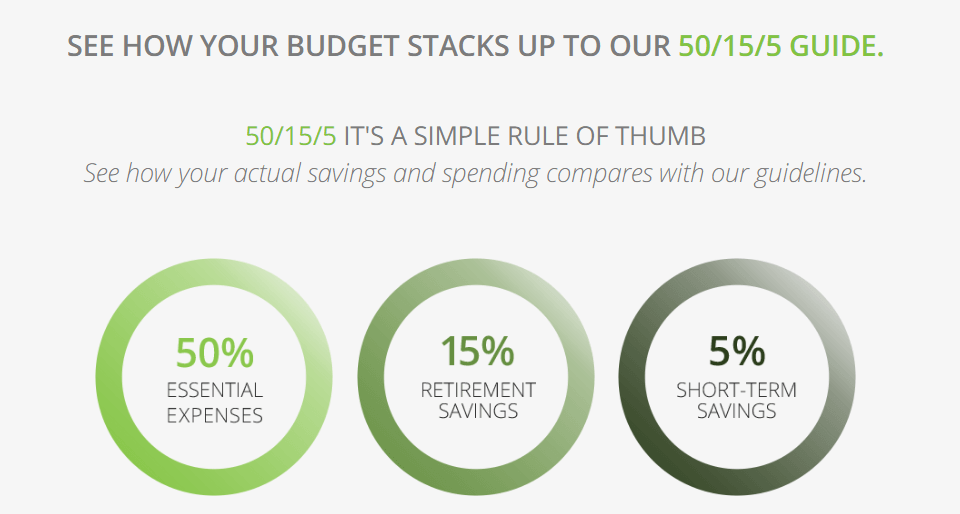
What is does: Fidelity’s budget check up helps you see if you’re on target with what you should be spending and what you should be saving each month.
How to use it: Fidelity allows you to input your income, expenses, and savings amounts for the overall year. Then, it looks at how you’re meeting the percentages of what they recommend you save and spend. You can clearly and easily see if you’re on track, far off, or just need to make little tweaks to keep your budget on target.
2. AARP Retirement Calculator
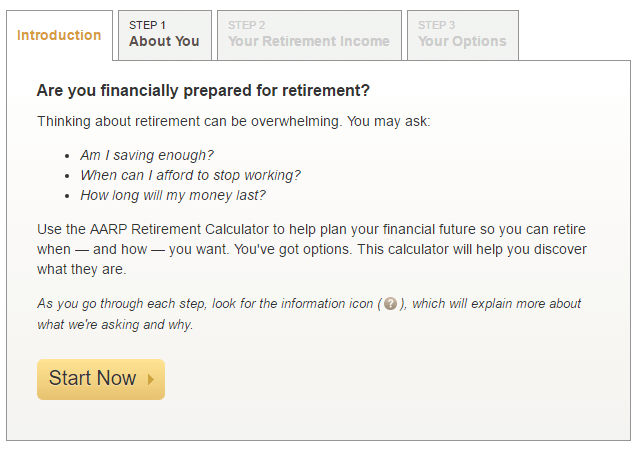
What It Does: The AARP Retirement Calculator helps you determine if you’re on track for retirement savings. It can help you answer questions about retirement, including if you’re saving enough money, if you’re on track for retiring on time, and how long your retirement fund may be expected to last.
How to Use It: The AARP Retirement Calculator uses three different steps to determine your retirement portfolio. First, you tell the calculator a bit about yourself, including your household status and salary. Next, you’ll be required to detail your retirement income. Finally, it will present you with your retirement options.
3. Federal Student Aid Repayment Estimator
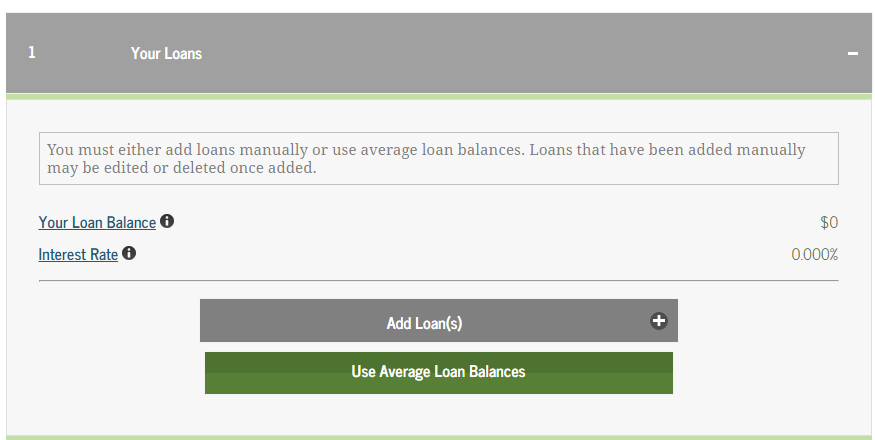
What It Does: The Federal Student Aid Repayment Estimator provides you with the possible options for repaying your student loans. For someone just beginning to make payments on their student loans, this estimator can walk them through the process of determining which plan works best for them.
How to Use It: The Federal Student Aid Repayment Estimator is easy to use. You begin by putting in the amount of your loan and the interest rate on the loan. Next, you fill out information about your filing status, adjusted gross income, family size, and the state you live in. Using this information, the Estimator will calculate how much you should expect to pay on your loans for different repayment plans, how much you will be paying overall, and how many months it will take to complete your payments.
4. Auto Loan Payment Calculator
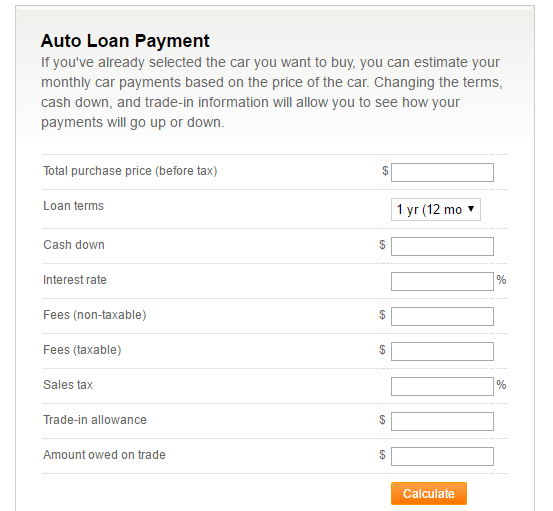
What It Does: The Auto Loan Payment Calculator allows you to see how much you will end up spending each month given a certain auto loan. This can help you make decisions on if you can really afford to finance a car or you’ll need to go with something cheaper.
How to Use It: To use this calculator, you simply input the details of the loan. Total purchase price, down payment amount, loan terms, and interest rate are all necessary, as well as other things like sales tax and if you traded a car in. The calculator then does the math for you to tell you how much your monthly car payment would look like.
5. Credit Card Repayment Calculator
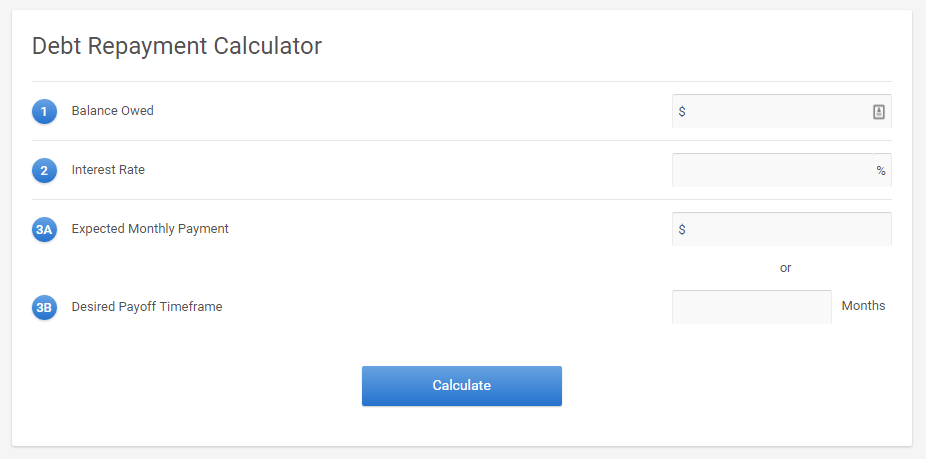
What It Does: The Credit Card Repayment Calculator, created by the Credit Karma, helps you see how long it will take you to pay off your credit card debt.
How to Use It: To use the Credit Card Repayment Calculator, you enter the amount you owe on the credit card and the interest rate of the card. You will then either be able to enter how many months you want to pay off that debt and the calculator will tell you what you owe, or you can enter how much you would like to pay each month and the calculator will tell you how long it will take to pay that debt off.
6. Emergency Fund Calculator

What It Does: This emergency fund calculator quickly does the math to allow you to see how much you should be holding in your emergency fund. It can also allow you to see how many months worth of expenses you have under control of your emergency fund.
How to Use It: Tell the calculator how much your home expenses, family expenses, and everyday expenses are in addition to the loans and payments you need to make each month. This can then give you a minimum of how much you’re spending each month. A sliding bar across the bottom of the calculator shows you how much you’ll need at different amounts of time.
7. The Coffee Budget Calculator
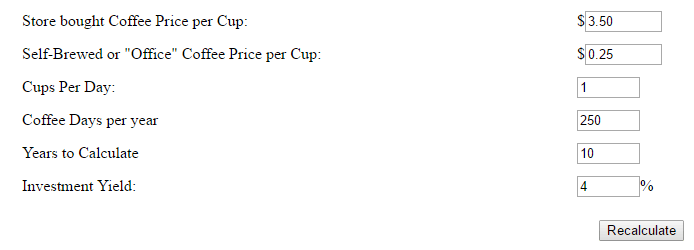
What It Does: The Coffee Budget Calculator’s main goal is to help you see the money you’re wasting on coffee each year and where that money could go if you choose to save or invest it instead. While the Coffee Budget Calculator does have coffee in mind, the same idea can be applied to eating lunches out or other small purchases you’re tempted to make periodically throughout the week.
How to Use It: The Coffee Budget Calculator does all the hard work for you. All you need to do is enter the price of coffee you’re purchasing (or you can use the default setting of $3.50), how many cups you purchase per day, and how many days of the year you’re purchasing that many cups of coffee. The Calculator then computes how much you’re spending each year and shows you how much money you would have saved if you choose to save that money instead.
When you first take control of your own finances, it can be difficult to really understand where your money is going. You’re let loose to pay your own rent, utilities, loans, groceries, and more, so it is easy to fall behind somewhere. But the sooner you get it together, the closer you'll be to financial stability. With these financial tools, you can get a firm grasp on what you should be spending, saving, and come up with new ways that you can begin to fluff up your savings or retirement accounts.



